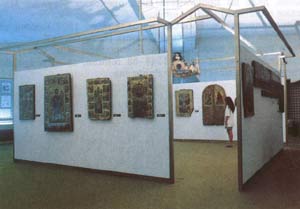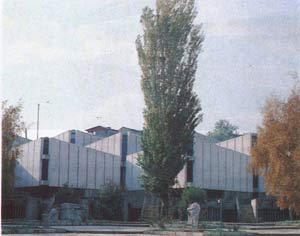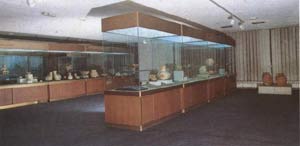|

Back in 1946, what was then known as the National Museum was founded in Kursumli An, where a museum collection and a Lapidarium (collection of stone monuments) had been established as early as before World War II. The National Museum experts dedicated the first years of their work there to collecting. Later on, due to more extensive and more diverse material, there was a gradual tendency toward a division into specialised departments in archaeology, ethnology, and history. The result of this was the emergence of three separate and independent institutions -- the Archaeological, Ethnographic, and Historical Museums. In addition, a Museum of the City of Skopje was also set up.

Following the disastrous earthquake of 1963, the first museum building was built. It was a monumental construction covering a total area of 11,000sq.m. and over 6,000sq.m. of exhibiting space.
Since 1982, the Archaeological Museum has displayed a permanent exhibition, featuring the material culture of Macedonia dating back to the prehistoric era. The valuable exhibits take the visitor on a journey through the millenniums, through the Neolithic Age, the Bronze and the Iron Ages, the Classical and the Hellenistic Periods, as well as the Romaoian-Slavonic Epoch.

Founded in 1952, the Historical Museum was first established as the Museum of the National War of Liberation. In 1985, the Historical Museum displayed the chronological overview of the Macedonian history through the centuries up to the National War of Liberation.
The Ethnographic Museum has a substantial fund of exhibits, which are sometimes thematically displayed. The museum’s permanent exhibition is still being arranged.
From Stara Skopska Carsija (The Old Skopje Bazaar) by Kosta Balabanov |